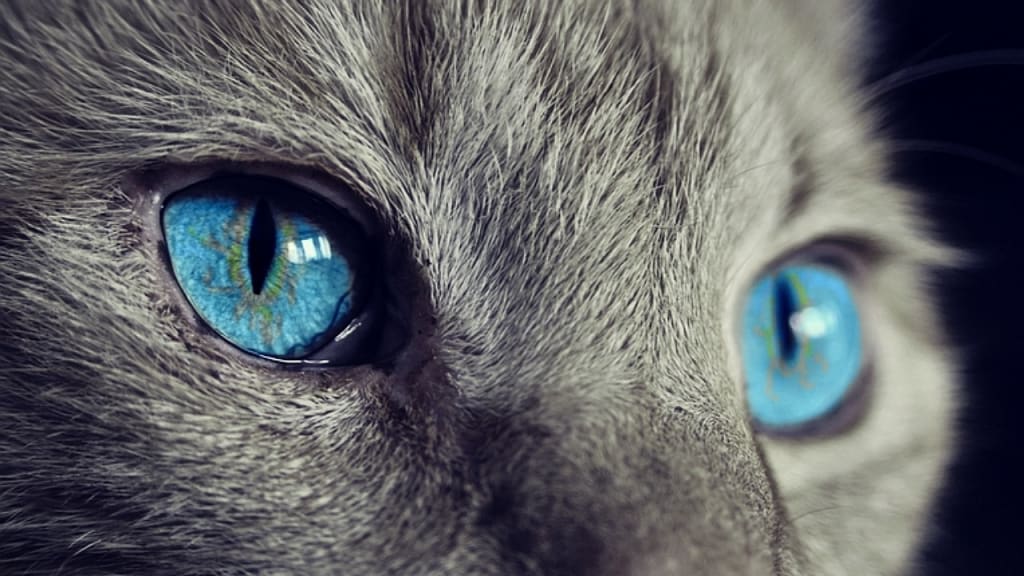The unique vision of cats:How they see the world
Understanding visual acuity, color vision, night vision, depth perception, and peripheral vision

Introduction
Cats are fascinating creatures that have been around humans for thousands of years. They are known for their curious nature, their independent personality, and their ability to see in the dark. However, many people are not aware of how cats see the world, and what makes their vision so unique. In this article, we will explore how cats see the world, including their visual acuity, color vision, night vision, depth perception, and peripheral vision.
Visual Acuity
Visual acuity is the sharpness of vision, and it is determined by the number and distribution of photoreceptor cells in the eye. Photoreceptor cells are specialized cells in the retina that are responsible for detecting light and converting it into electrical signals that are sent to the brain. The two types of photoreceptor cells are rods and cones. Rods are responsible for detecting light and dark, while cones are responsible for color vision and visual acuity.

Cats have excellent visual acuity, and they are able to see fine details at a distance of up to 20 feet. Their eyes are designed to focus on moving objects, which is an adaptation that helps them hunt prey. Their eyes are also positioned on the front of their face, which gives them binocular vision. This means that they are able to see in three dimensions, which is important for hunting and navigation.
Color Vision
Cats are not able to see as many colors as humans. They have dichromatic color vision, which means that they have two types of color receptors in their eyes: blue and green. This means that they are not able to see the full spectrum of colors that humans can see. However, they are able to see some colors, and they are able to distinguish between different shades of blue and green.

It is interesting to note that cats are able to see UV light, which is invisible to humans. This means that they are able to see patterns and details that are not visible to humans. This ability may be helpful for them when they are hunting, as it allows them to see patterns in the fur of their prey that are not visible to humans.
Night Vision
Cats are known for their ability to see in the dark. This is because their eyes are designed to capture as much light as possible, which allows them to see in low-light conditions. They have a large number of rods in their eyes, which are responsible for detecting light and dark. They also have a reflective layer behind their retina called the tapetum lucidum, which reflects light back through the retina, increasing the amount of light that is detected.

This combination of adaptations allows cats to see in light that is six times dimmer than the level at which humans can see. It also means that they are able to see movement in low-light conditions, which is important for hunting.
Depth Perception

Cats have excellent depth perception, which is essential for hunting and navigating their environment. This ability is due to the overlap of their eyes' fields of view, providing them with binocular vision. The slight difference between the images each eye sees allows cats to judge distance accurately.
Peripheral Vision

Cats have a much wider peripheral vision than humans. They can see almost 90 degrees to each side, while humans only have a peripheral vision of about 60 degrees. This ability is due to the shape of their eyes and the location of their retinas.
Conclusion
Cats are fascinating creatures that have adapted to their environment in many ways. Their eyes are one of their most interesting adaptations, as they are able to see in the dark, focus on moving objects, and detect patterns that are invisible to humans. While their color vision is not as developed as humans, they are still able to distinguish between different shades of blue and green. If you are a cat owner, it is important to understand how your cat sees the world, as this will help you understand their behavior and their needs.
About the Creator
Enjoyed the story? Support the Creator.
Subscribe for free to receive all their stories in your feed. You could also pledge your support or give them a one-off tip, letting them know you appreciate their work.






Comments
There are no comments for this story
Be the first to respond and start the conversation.